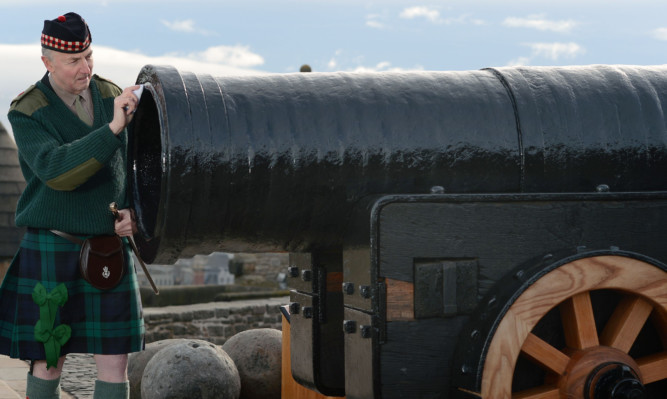Historic cannon Mons Meg has returned to Edinburgh Castle after passing an “MOT”.
The six-tonne gun, which dates back to the 15th century, was removed from the castle in January for specialist conservation work, the first time it had left the site in 30 years.
Over the past two months the previous coat of paint was removed by bead blasting. It was scanned to create a 3D record of its condition and then repainted.
The 1934 oak carriage that Mons Meg sits on also underwent conservation and repair works by Historic Scotland’s expert joiners and blacksmiths.
The cannon arrived back at Edinburgh Castle on Sunday and was lifted by crane to its display position this morning.
Nick Finnigan, executive manager of Edinburgh Castle, was delighted to welcome it back to the castle.
He said: “To many people, Mons Meg is synonymous with the castle and visitors travel from all over the world to see her and be photographed by this most famous of historical icons, and I am sure they will be thrilled to see her back on display.”
The cannon was given to King James II by Duke Philip of Burgundy as a gift in 1457 and was considered cutting-edge military technology at the time, capable of firing a 150kg “gunstones” up to two miles.
It was used in battle for almost 100 years, then used to fire salutes.
Richard Welander, head of collections at Historic Scotland, said: “Mons Meg undergoes regular ‘health checks’ and inspections, but this was the most detailed and intricate work we’ve carried out on her in almost 30 years, when she last left the castle.
“The cannon was heavily over-painted, which obscured the iron underneath. The conservators carefully removed all the paint using bead blasting, which gently removed all paint layers, without damaging the metal below.
“Stripping all the paint off Mons Meg allowed us to carry out a detailed assessment of her condition.
“She looks like a robust bit of artillery, but she’s actually quite vulnerable and we were able to see up close the damage done when she burst her barrel in 1681.
“Mons Meg is one of Edinburgh Castle’s most-beloved treasures and carrying out these essential works ensures she’ll be in top condition for visitors to enjoy for years to come.”
